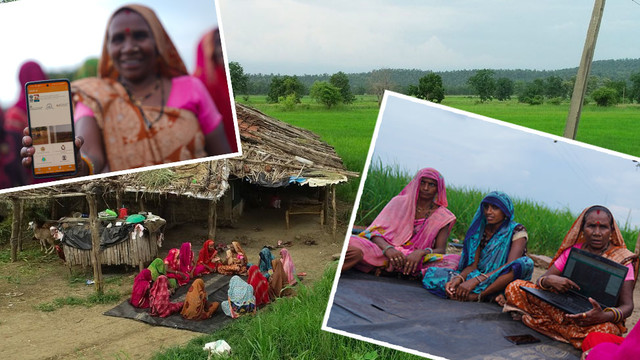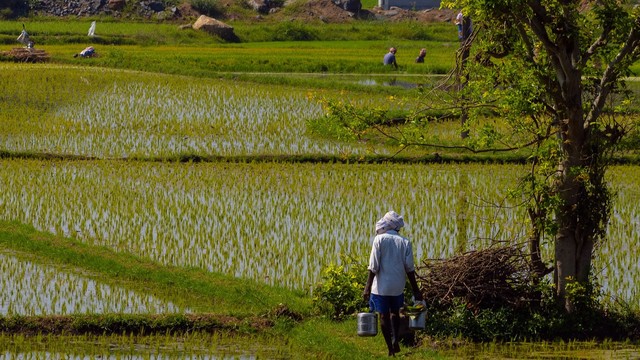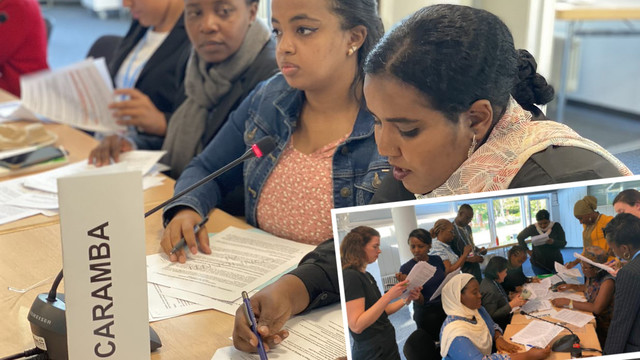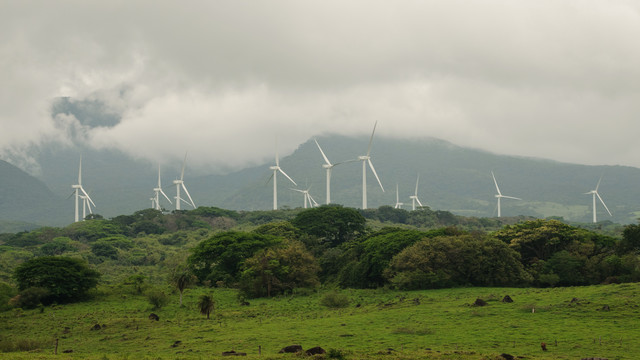Towards better assessment of adaptation results
How can countries align their climate adaptation assessment mechanisms with other frameworks? Barry Smith highlights opportunities for achieving effective adaptation monitoring and evaluation.


Mangroves being planted as part of a climate change adaptation strategy in the Philippines (Photo: Jessie F. Delos Reyes, USAID via Flickr, Open Access)
Multilateral climate funds are missing opportunities for better adaptation monitoring and evaluation for learning (MEL). Global Results Measurement Frameworks (RMFs) set up by climate funds should seek to align with, and nurture national MEL systems. This would benefit both the global climate funds and developing countries. So, how can global funds better embrace country-owned RMFs?
IIED and partner Garama 3C Ltd are working on a project to help developing countries establish adaptation monitoring mechanisms that improve transparency, increase learning and effectively evaluate progress towards adapting to climate change. We have undertaken a series of ‘light touch’ case studies looking at how countries can align adaptation monitoring and evaluation (M&E) with other frameworks.
Such an alignment would also help countries to grow their adaption M&E activities into full MEL systems, facilitating improved decision-making in future.
Benefits of aligning global RMFs with national M&E systems
Global RMFs that are better integrated with national systems can help countries develop and embed national climate change M&E systems, generating country buy-in and integrating climate change MEL across government ministries to accurately report against their specific priorities.
Despite these benefits, there is limited evidence that M&E systems are linking across levels – the global RMF with the national M&E. This misses out on efficiencies of using existing frameworks. An overemphasis on upward accountability through reporting to funders can neglect downward accountability and adds layers to already complicated M&E requirements.
Countries are best placed to understand their own adaptation needs, and many countries are already developing diverse adaptation indicators. It’s these indicators that should be used for reporting.
Evidence of strong national M&E systems
Adaptation M&E in many developing countries is at a nascent stage, but this is not always the case. Several countries have developed well-functioning M&E systems, presenting strong opportunities for alignment.
These systems include frameworks for climate change adaptation, such as Kenya’s monitoring, reporting and verification (MRV) framework, established to track the results of mitigation and adaptation actions. The Philippines designed its Results-Based Monitoring and Evaluation System (RBMES) to measure results of implementing the National Climate Change Action Plan (NCCAP) (2011).
Some M&E systems integrate climate change indicators – the Cambodia Climate Change Strategic Plan 2014-23 (CCCSP), for instance. The global processes under the UNFCCC are also driving national-level M&E, such as the NAP process in Peru, Kiribati, and Ethiopia.
There is already evidence that global climate funds can support national systems, as in Mozambique, Samoa and Cambodia where technical assistance provided by the Climate Investment Fund (CIF) under the Pilot Program for Climate Resilience (PPCR) has helped to embed national M&E systems.
Some countries, such as Morocco, already have environment information and monitoring frameworks that work well. Linking into these systems can deliver efficiencies by reducing reporting burden and speeding up integration of indicators into existing frameworks.
Two routes for alignment
We have analysed monitoring systems in Mexico, Morocco, South Africa and the Philippines to assess their potential for linking with global frameworks and informing adaptation MEL.
Drawing from our analysis, we identify two broad routes for linking up:
i) global RMFs can align with strong country systems
ii) global funds can nurture less sophisticated country-level M&E systems.
Our recommendations are detailed below:
i) Global RMFs can align with strong country systems
To effectively align with national systems, funds can harmonise their metrics with country-led results frameworks:
- Align with country priorities: the different funds’ RMFs help countries focus their project proposals on results areas based on the funds’ strategic priorities. Aligning proposals with country priorities instead would allow countries to assess adaptation progress against their own country-specific goals.
- Mandate country focal points with monitoring responsibilities: climate funds can provide a focus on portfolio or country-level reporting through delineating monitoring roles to country focal points to bring together MEL processes at different results levels.
- Design RMFs with a stronger emphasis on downward accountability and use of results for better decision making: this will help alignment with measuring the long-term benefits of an investment rather than develop project-specific, detached indicator frameworks.
Funds can also use existing country frameworks – provided these frameworks are sufficiently robust:
- National monitoring systems can inform climate funds’ RMF indicators: country-led indicators can provide more accurate measures of adaptation success, by providing context-specific metrics to measure process and outcomes success. This is achieved through context-specific indicators to measure processes, outcomes and impacts over the longer-term.
- Use national repositories and data systems for sustained reporting: using national repositories or data systems may not provide the same resolution of primary or project-specific data, but it can be an effective way to collect sustained data on a regular basis.
ii) Global funds can nurture less sophisticated country-level M&E systems
Where national systems are at an early stage of development, global funds can play a role in fostering MEL systems or integrating their own RMFs into the emerging national systems by providing financial and technical assistance:
- Technical assistance: international funds can invest in national M&E systems and support the national MEL apparatus to ensure sustainability. As well as drawing on existing indicators from country-led frameworks, funds can support already-operational institutions and processes, as well as existing data sources, avoiding duplication and building on what is in place.
- Improve countries MEL technical capabilities: a concerted global effort is needed to make sure that countries have the technical capacity they need to identify and implement adaptation actions and track their performance.
- Integrate adaptation MEL within national budgetary systems or national MEL for development: linking climate results with national budgeting processes, medium-term financing and expenditure frameworks, as well as national development planning processes, helps ensure sustainability. Climate funds can play a key role in funding capacity development for MEL or institutionalising it by investing in long-term capabilities and MEL system development.



